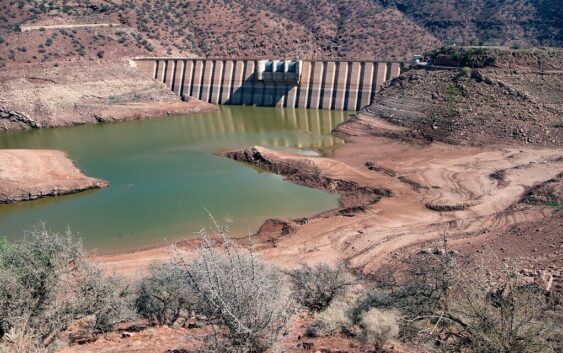- TANZANIA PRESIDENT ANNOUNCED CONTRIBUTION OF TZS100MILLION FOR ARUSHA CHURCH CONSTRUCTION
- KITGUM-KIDEPO ROAD UPGRADE: UGANDA PARLIAMENT APPROVED SHs450BILLION LOAN
- GPA ANNOUNCED PLANS TO BUILD SECOND LANDER BRIDGE IN THE GAMBIA
- HOW CAMEROON AVIATION SAFETY KEEPS IMPROVING BUT FALLING SHORT OF INTERNATIONAL STANDARD
- NWSC SET TO IMPROVE WATER INFRASTRUCTURE IN UGANDA
MOROCCO DAMS REACHED 97.3M CUBIC DUE TO LAST YEAR WATER DROUGHT

In the Marrakech-Safi region, water reserves reached 97.3 million cubic meters, with a filling rate of nearly 49%, up from 36% a year earlier.
After last year’s severe drought, the dams’ filling rate in Morocco reached nearly 33%, equivalent to 5.2 billion cubic meters as of February 20.
The filling rate remains largely stable compared to the same period last year, according to a statement from the Directorate General of Hydraulics quoted in converging media reports.
The filling rate in February 2022 stood at exactly 33%, with water reserves equivalent to 5.3 billion cubic meters.
For some regions, however, the recovery in water reserves has been more pronounced. In the Marrakech-Safi region where water reserves reached 97.3 million cubic meters, with a filling rate of nearly 49%, up from 36% a year earlier.
Following the recovery in rainfall this year, Morocco’s water resources recorded a 207% rise, Minister of Logistics and Water, Nizar Baraka, said earlier this month.
The filling rate, however, varied widely depending on regions, reaching 55% in some regions like the Loukous dam. For other regions, the filling rate remained low such as the Sharq region where it did not exceed 25%.
Given Morocco’s climate, the country has always been vulnerable to drought and water scarcity. However, since the 90s, climate change exacerbated the trend, with droughts becoming more severe and frequent.
Water scarcity now tops the list of the challenges facing Morocco’s stability, and socio-economic development. World Bank data suggests that the average water resources per capita were at 645 cubic meters in 2015, well below the international “water poverty line” of 1000 cubic meters per capita.
Water reserves per capita are expected to drop to 500 cubic meters per capita by 2050, nearing the international threshold of “extreme water scarcity.”
To face the threat of water scarcity, Morocco is now turning to desalination, a process that is extremely energy-intensive in a country that is still a net energy importer, considering that Morocco imports 90% of its energy needs.
SOURCE: MoroccoWorldNews

